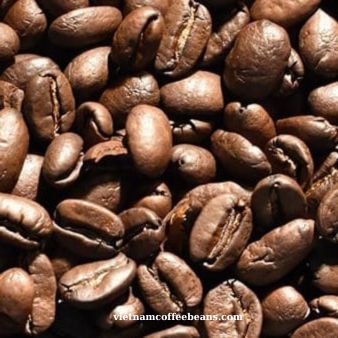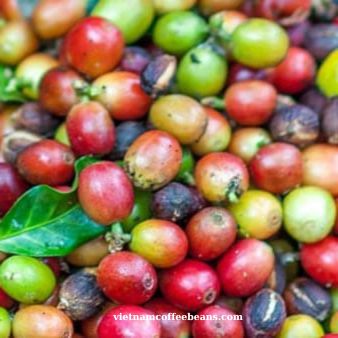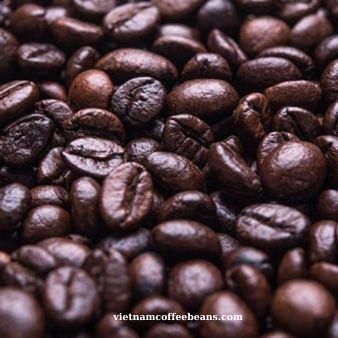A coffee bean, the seed of the Coffea plant, is the primary source of coffee and is found within the red or purple coffee cherry, a stone fruit.
Coffee beans have a rich history, dating back to the 15th century when they were first cultivated in Ethiopia. Since then, coffee has become one of the most popular beverages in the world.
Cultivation of coffee beans has come a long way since its early beginnings. Today, coffee is grown in over 50 countries around the world, with Brazil being the largest producer. The caffeine content of coffee beans can vary depending on the type of bean, how it’s roasted, and how it’s brewed.
Arabica and Robusta are the most economically significant coffee varieties, with 60% of global production being Arabica and 40% Robusta. Arabica beans contain 0.8-1.4% caffeine, while Robusta has 1.7-4.0%. Coffee is a widely consumed beverage and a crucial cash crop, making up over 50% of some developing countries’ foreign exchange earnings. Its importance has shaped global culture and cuisine. In 2017, coffee exports accounted for 70% of production, totaling $19.9 billion.
You’ll find that there are two main types of coffee beans: Arabica and Robusta. If you’re looking for a milder flavor, Arabica beans are a great choice, while Robusta beans are known for their strong, bold taste.
01

Arabica Beans (Coffea arabica)
With lower caffeine content than Robusta beans, Arabica beans are ideal for those seeking a milder coffee experience.
02

Robusta Beans (Coffea canephora)
Robusta beans, known for their stronger and more bitter flavor compared to Arabica beans, are easier to cultivate due to their lower altitude requirements and maintenance needs, making them cheaper and more accessible.
03

Liberica Beans
04

Excelsa Coffee
Geography and Harvesting Technies
The geography and harvesting techniques of different regions can greatly impact the flavor and quality of your daily cup. Climatic conditions, cultivation techniques, harvesting season, plantation locations, and quality control all play a role in determining the final product.
Here are some factors to consider:
- Climatic conditions: Coffee plants thrive in regions with moderate temperatures, high humidity, and consistent rainfall. Too much or too little of any of these factors can affect the growth and quality of the beans.
- Cultivation techniques: Different regions have different approaches to growing coffee. Some rely on traditional, organic methods, while others use modern, high-tech farming practices. The type of soil, shade, and fertilizers used can also affect the taste of the coffee.
- Harvesting season: Coffee cherries are typically harvested once a year, but the timing can vary depending on the region. Beans picked at the peak of ripeness tend to have a more complex flavor profile.
All of these factors, and many more, can affect the flavor and quality of the coffee beans you drink. So, the next time you take a sip of your favorite brew, take a moment to appreciate the hard work and attention to detail that went into producing those beans. Whether you prefer light, fruity roasts or dark, bold blends, there’s a world of coffee out there waiting to be explored.
As you savor your morning cup, imagine the journey those little coffee beans have taken to reach your mug, from the moment they were picked off the tree to the meticulous processing methods employed to enhance their distinct flavors and aromas.
Processing methods can make a significant difference in the final taste of your coffee. One crucial factor is the wet vs dry processing method. In wet processing, the beans are removed from the cherry and washed with water to remove the sticky fruit residue. This method produces a cleaner and brighter flavor profile. On the other hand, dry processing involves drying the cherries in the sun, allowing the fruit to dry around the beans. This method produces a sweeter and more complex flavor profile.
Fermentation methods are also essential in coffee processing. During fermentation, bacteria break down the fruity mucilage that surrounds the beans, influencing their taste. There are different fermentation methods, such as honey processing, natural processing, and washed processing.
In honey processing, some of the mucilage is left on the beans during drying, producing a sweet and fruity flavor. Natural processing involves drying the cherries with the fruit still intact, creating a bold and fruity flavor profile. Lastly, washed processing involves removing all of the mucilage before drying, resulting in a clean and bright flavor.
Understanding the different processing methods can help you appreciate the complex and unique flavors of specialty coffee.
Coffee Bean Roasting Techniques
Now that you’ve learned how processing methods can affect the taste of your morning cup, let’s dive into the art of roasting and how different techniques can unlock a whole new world of flavor.
Roasting is the process of heating green coffee beans to a high temperature, which causes them to expand and change color. There are many different roasting techniques, but the two most common are drum roasting and air roasting.
Drum roasting involves placing the beans in a rotating drum that is heated by gas or electricity. This method produces a more uniform roast and is often used by large coffee roasters.
Air roasting, on the other hand, uses hot air to roast the beans, resulting in a more even roast and a brighter flavor. Home roasting has become increasingly popular in recent years, allowing coffee lovers to experiment with different roasting techniques and create specialty roasts that are tailored to their specific taste preferences.
Flavor profiling is an important part of the roasting process, as it involves evaluating the taste, aroma, and body of the coffee to create a well-balanced and delicious cup.
Coffee Beans Grading System
Let’s dive into the grading system for our beloved morning pick-me-up. When it comes to coffee beans, there are various factors that determine their quality and ultimately their price.
Here are some of the key aspects that are used to grade coffee beans:
- Bean size: The size of the coffee beans is an important factor in grading them. Larger beans are generally considered to be of higher quality as they tend to have a more consistent flavor profile.
- Moisture content: The moisture content of the beans also plays a role in their grading. Beans that are too dry or too wet can affect the flavor and aroma of the coffee.
- Defects identification: Coffee beans that have defects, such as insect damage, mold, or uneven color, are considered to be of lower quality. These defects can affect the flavor and aroma of the coffee.
- Flavor profile: The flavor profile of the coffee beans is perhaps the most important factor in their grading. Beans that have a balanced and complex flavor profile are considered to be of higher quality and command a higher price.
All of these factors, along with others, are used to determine the quality of coffee beans and their pricing variations.
Whether you’re a coffee enthusiast or just someone who enjoys a good cup of coffee, understanding the grading system can help you make more informed decisions when it comes to choosing the perfect coffee beans for your morning brew.
Aroma and Flavor
You might find it interesting to learn about the chemical composition of the aroma and flavor molecules present in coffee beans. These molecules play a significant role in sensory evaluation, which is essential in determining the quality of coffee.
The aroma molecules in coffee beans primarily come from the roasting process, where sugars and amino acids in the beans undergo the Maillard reaction, resulting in the formation of various aroma compounds.
On the other hand, flavor molecules are influenced by brewing methods and extraction techniques, with factors such as water temperature and pressure affecting the final taste.
When it comes to coffee pairings, aroma and flavor molecules can significantly impact the overall experience. For instance, pairing coffee with foods that have complementary flavors can enhance the taste of both. Similarly, pairing coffee with foods that share aroma molecules can create a harmonious and enjoyable experience.
Understanding the composition of aroma and flavor molecules can help coffee lovers appreciate the complexity of the beverage and make informed choices about their brewing methods and coffee pairings.
Storage and Freshness
Maintaining the peak flavor and aroma of your favorite coffee beans requires proper storage and freshness. You may have noticed that your coffee loses its flavor and aroma over time, turning stale and bland. This is because coffee beans are perishable and can easily become stale due to exposure to air, moisture, and heat.
To prevent this, it’s important to use proper storage methods and preservation techniques. One effective way to keep your coffee fresh is by preventing oxidation, which can be done by storing your coffee in airtight containers. This will prevent air from getting in and reacting with the oils and other compounds in the coffee beans, which can lead to a loss of flavor and aroma.
Additionally, it’s important to keep your coffee away from heat and moisture, which can also affect the quality of your coffee. By storing your coffee in a cool, dry place, you can help preserve its freshness and flavor for longer.
So, next time you bring home a bag of fresh coffee beans, remember to store them properly to ensure a delicious and satisfying cup every time.







